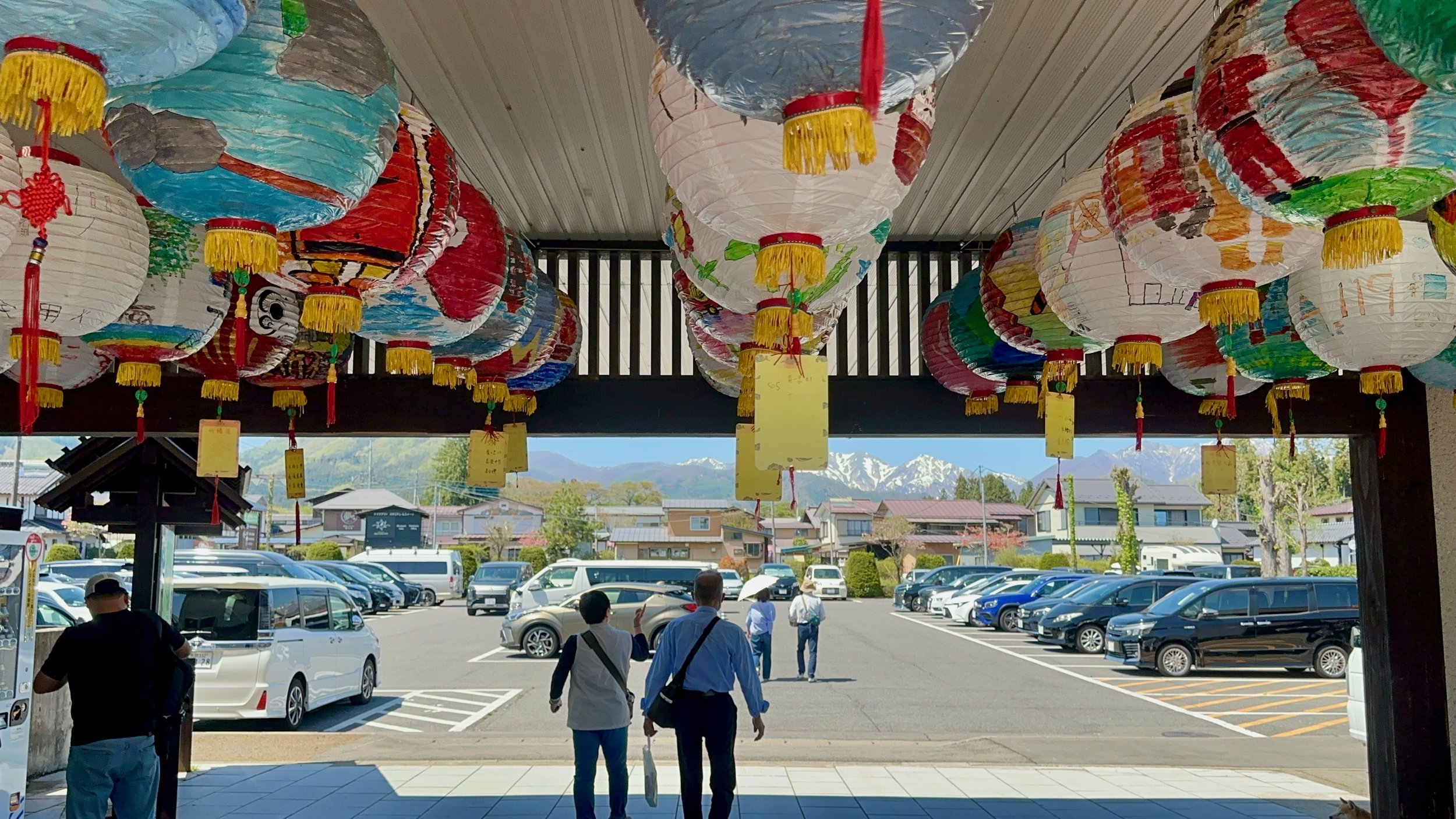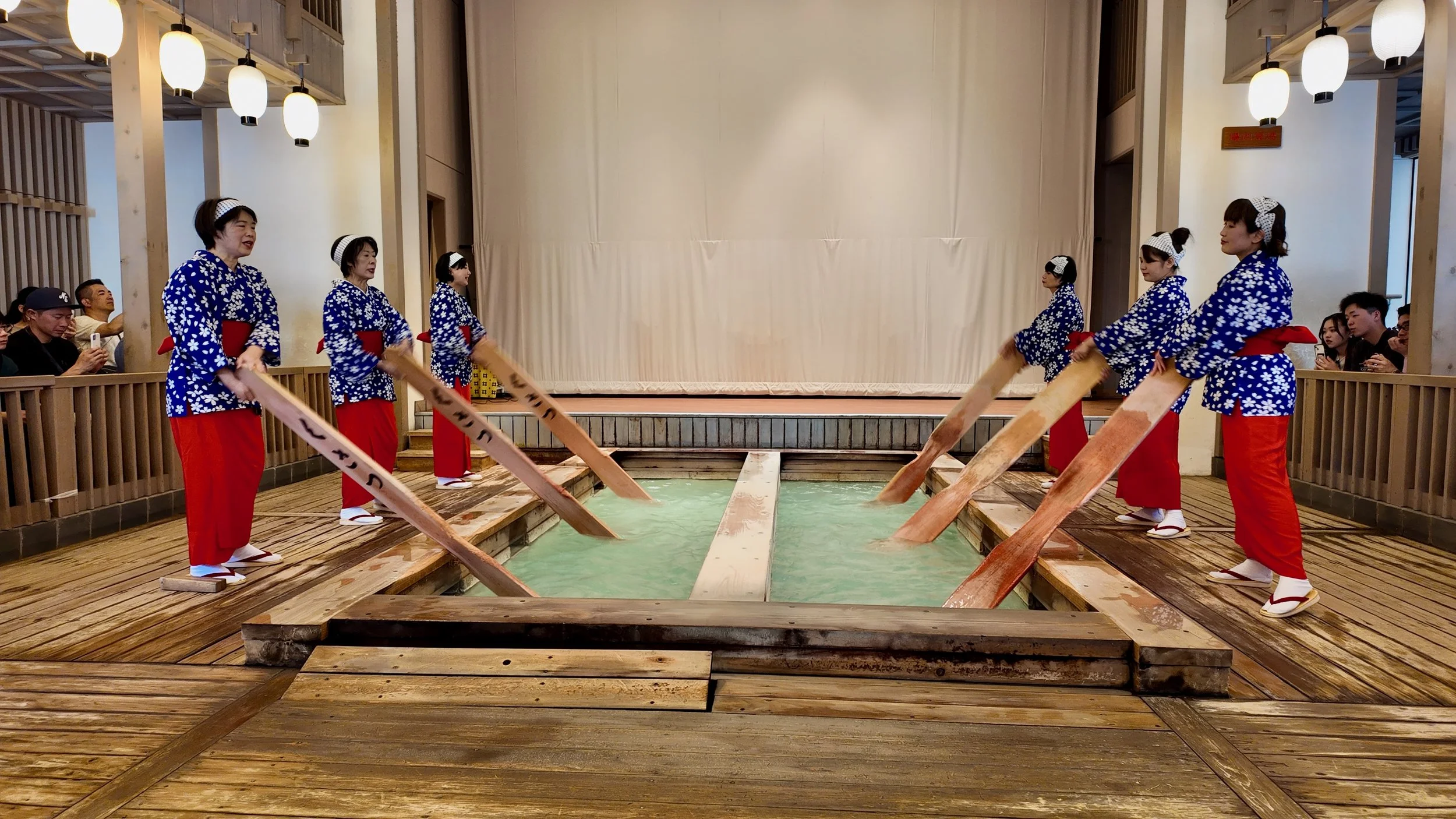5-day road trip in Gunma 「Day 2 : Takumi no sato & Kusatsu」
📍 takumi no sato
Nestled amidst rice fields and apple orchards with Minakami's mountains as its backdrop, Takumi no Sato stands as a tranquil oasis for arts and crafts enthusiasts. Its scenic location adds an extra layer of charm to the crafting experience, providing visitors with a serene setting to unleash their creativity.
Within the village's compact layout, over two dozen workshops and stores await exploration, offering a diverse array of traditional and modern crafts.
From the intricate art of soba making and the delicate craft of washi papermaking to the contemporary techniques of painting and glass etching, there's an artistic pursuit to captivate every visitor.
Comprising four distinct villages, Takumi no sato beckons visitors to wander through its rural landscapes, where the tranquil beauty of mountains, rice fields, and orchards creates a picturesque backdrop.
In addition to the craft workshops, the villages offer delightful fruit-picking experiences and charming shops selling Japanese arts and crafts.
It's a cultural journey that immerses visitors in the rich tapestry of Japanese craftsmanship amidst the splendor of nature.
During our visit, we opted to explore the villages by renting electric bicycles — a perfect way to soak in the scenery at our own pace.
For around ¥1,500, we secured two bikes, including one with a kid seat, for a leisurely two-hour ride.
The weather was idyllic, and the peaceful atmosphere along the way encouraged us to make several stops, making our experience at Takumi no Sato truly memorable.
takumi no sato
📍 Shima Seiryu no Yu
After our adventure, we hopped back into the car and drove for about 40 minutes to reach our daily onsen stop: Shima Seiryu no Yu. This place was like stepping into a traditional Japanese picture book, with cozy open-air baths perfect for relaxing. Though the water felt a tad hotter than usual (something we often noticed in Gunma Prefecture compared to other places like Gifu and Mount Fuji), we still enjoyed a quick dip before hitting the road again.
address: 3830-1 Shima, Nakanojo, Agatsuma District, Gunma 377-0601
hours: 10am-8pm (Closed on the 4th Wednesday of the month)
fees: 2h - ¥600
Once we were all refreshed, we continued our journey, driving for about 90 minutes until we arrived at Kusatsu Onsen. We were super excited not to miss out on the magical night lights at the yubatake, where hot spring water flows. It was like entering a fairy tale with all the beautiful lights, and we couldn't wait to explore!
📍 yubatake at Kusatsu Onsen
yubatake by night at kusatsu onsen
Kusatsu Onsen is like a hidden gem nestled in the mountains of Gunma Prefecture, and it's no wonder it's considered one of Japan's best hot spring resorts. Legend has it that the hot spring water here can cure just about anything, except maybe lovesickness!
With its location at a lofty altitude of 1200 meters above sea level, Kusatsu offers more than just soothing hot springs. In winter, you can hit the slopes for some skiing, while the rest of the year is perfect for scenic hikes surrounded by breathtaking natural beauty. Plus, Kusatsu is part of Japan's Romantic Road, adding to its charm.
At the heart of Kusatsu Onsen lies the iconic Yubatake hot water fields, a sprawling system that serves as the town's symbol and soul. Following the distinct aroma, you'll find yourself drawn to this mesmerizing site, where geothermal water surges to the surface straight from the earth's depths.
Aptly named "hot water field," the Yubatake features a series of interconnected wooden chutes that cool the water while preserving its natural mineral content.
As you approach, you'll be greeted by swirling clouds of hot steam rising from the emerald reservoir, a sight that epitomizes the essence of Kusatsu Onsen. Renowned as Japan's largest natural hot spring water reserve, the Yubatake boasts an abundance of healing properties.
With temperatures reaching around 55 degrees Celsius and a high acidity level, the water is believed to possess curative powers for a multitude of ailments and is particularly beneficial for the skin. Such is its reputation that several Tokugawa shoguns even had barrels of the water transported to their castle in Edo (now Tokyo), attesting to its revered status throughout history.
📍 Kosenji Temple
After enjoying the beautiful light show and soaking up the lively atmosphere filled with happy laughter, we took a relaxed walk through the streets of Kusatsu at night. Our stroll led us to Kosenji Temple, a peaceful Buddhist temple that honors the beauty of Kusatsu Onsen.
Sitting atop a hill overlooking Yubatake, the temple is easily accessible by climbing many steps from the area below. From the top of the stairs, you are at a good vantage point for photos of the Yubatake below.
Kosenji Temple
At the temple, we saw many monuments that tell the story of Kusatsu's history. One special monument celebrates Issa Kobayashi, a famous poet from the Edo Period (1763-1827), who loved Kusatsu Onsen. He wrote a special haiku:
“Through the steam, Clearly seen, The shape of the moon”.
Kosenji Temple has been around since 1200, carrying on traditions and reminding us of Kusatsu's past.
It was a wrap for another day filled with adventure and discoveries in a serene and lovely setting. We made our way to our chosen spot for the night, a fantastic parking spot I had discovered and selected online while preparing for our journey.
I knew it would be good, but I didn't anticipate the breathtaking view that awaited us in the morning! We said goodnight, looking forward to exploring this amazing town in the daylight.





































